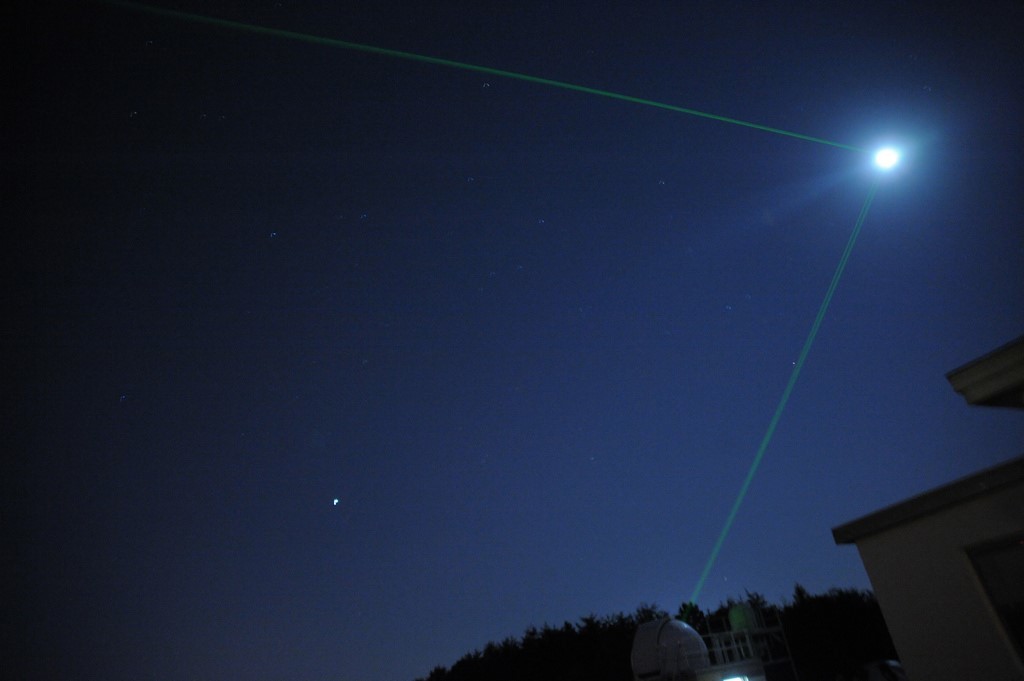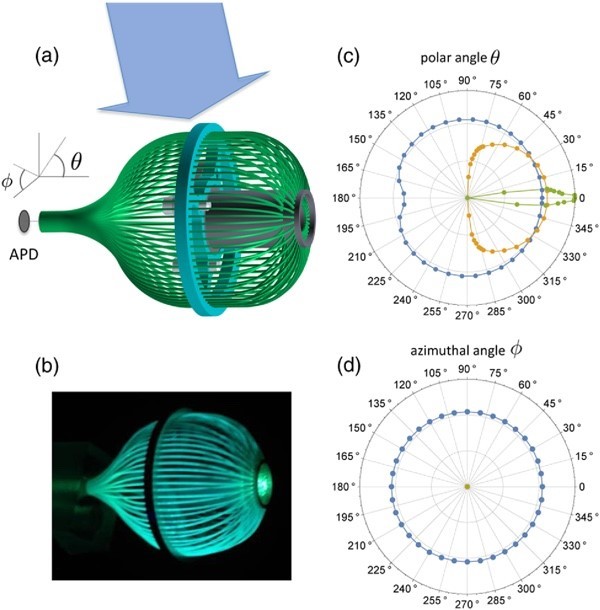Laser communications on the example of Facebook technologies

/ photo NASA Goddard Space Flight Center CC
In our blog on Habré we raise a variety of topics, for example, last week we discussed the problem of overtime of developers, and a couple of days earlier we talked about trees of behavior.
')
In our today's material, we would like to touch on the topic of communications and talk about what atmospheric optical communication is, why it is so interesting for the Facebook research group and how much success the company has achieved in this area.
Facebook is no longer just a social network. The company's main efforts are focused on the implementation of projects under the Internet.org initiative, which some consider to be the greatest mission to unite the world, while others are harshly criticized. Anyway, the attempt to connect the world together led to a number of scientific discoveries and technical developments, especially in the field of laser communications.
At the moment, approximately 4 billion people cost the Internet, of which 1.6 billion live in remote parts of the world. And if fiber-optic connectivity is now the standard for high-speed wired communications, radio waves are still the basis of wireless connectivity to the Web. The limited spectrum of these waves does not allow data to be transmitted at a speed comparable to wired connections, and therefore is not quite suitable for connecting the whole world.
The largest IT companies in the world offer their solutions to the current problem: Google launches balloons as part of the Loon project, and SpaceX is developing its satellite network.
A number of their developments were also presented and tested by a team from the laboratory of the Connectivity Lab, owned by Facebook. In particular, most recently, the Aquila unmanned aerial vehicle made its first flight, the connection to which is maintained using atmospheric optical communication [Eng. Free Space5 Optics Communication, FSO].
How does FSO work
The peculiarity of the transmission of any signal from a height is that if we begin to increase this height, leaving the remaining parameters unchanged, the signal will cover more area, but at the same time it will become weaker. The power of the radio signal, in particular, decreases in proportion to the square of the distance.
If you take cell phone towers, then they transmit a fairly strong signal in relatively small areas - an excellent option for regions with high population density. With medium and sparsely populated areas, the situation is more complicated, since it requires to cover more area.
For example, an airplane that is at a high altitude and covers an area with a radius of 50 kilometers will emit a rather weak signal. The signal from the satellite, designed to cover the whole continent, will be completely invisible. Putting the amplifier is also meaningless, because the radio communication is rapidly weakening, and it requires a large amount of power. These problems are intended to solve the FSO-link.
Atmospheric optical communication is based on the transmission of visible light and infrared radiation. The laser, which is used in FSO systems, has high power comparable to fiber-optic transmission, and at the same time consumes less energy than radio-relay systems. In addition, other communication systems, based primarily on radio communications, do not interfere with laser beams, since visible and infrared light are in a different part of the spectrum. Therefore, it remains only to direct the laser to a pre-installed receiver.
The technology of fixed optical communication is actively used to transmit signals between buildings when this cannot be done directly, and indoors where cable laying is impossible or undesirable (for example, architectural monuments).
The “mobile” use of FSO is limited by high requirements for signal accuracy. This is the same as aiming a laser at a coin from a distance of 15 kilometers. In addition to this FSO system, the following requirements are met:
- High location of the system in the atmosphere to minimize the effects of wind and other weather conditions;
- The possibility of regular control over the system (unlike, for example, from Google balls);
- The design, on the one hand, should not be too cumbersome to consume a minimum of energy, and on the other, it should have everything necessary to obtain energy from the Sun.
Facebook development
One of the technological solutions that meet these requirements is the Aquila high-altitude aerial vehicle. The wingspan of its wings is comparable to that of the Boeing 737, and its weight is only 450 kilograms. Its body is made of carbon fiber, which is easily subjected to changes before hardening, after which it becomes stronger than steel.
The aircraft is able to maintain a height of not less than 18 kilometers above the ground for several months. There he does not interfere with the movement of air transport. During the daytime, the drone will rise up to 27 kilometers to charge solar panels, and at night it will drop to 18 to save energy, picking up speed due to gravitational pull. Acuila will be able to distribute the Internet within a radius of 50 kilometers, broadcasting a signal to a small tower or antenna. These towers are already converting it to LTE or Wi-Fi.
The first Aquila test, conducted on June 28, proved successful : the aircraft reached a speed of 40 kilometers per hour at an altitude of more than 600 meters. According to the head of Facebook, Mark Zuckerberg, the task of the drone was to hold 30 minutes in the air, but everything went so well that it was decided to increase the time to 96 minutes.
The first prototypes are supplied with a conventional battery, but in the future they will be replaced by solar batteries with a capacity of 5,000 watts. The team of engineers and scientists still have a lot of work to optimize on-board power systems and communications to make the use of Aquila economically viable.
It took a little over a year to design, build and launch the first prototype. The final model of the drone is planned to be manufactured and tested in the next 2-3 years.
To ensure communication with similar aircraft or satellites, a quality and fast connection is required. More recently, the results of a study by the Connectivity Lab team, which has developed a new luminescent detector, which can increase the transmission capacity of a laser communication system by several orders, have been published.
A small optical detector consists of the simplest elements - luminescent hubs made of materials that allow changing the wavelength, and a photodiode for receiving a laser beam. Its principle of operation is that the special fiber from which the detector is made receives a blue laser beam. After that, passing through a certain fiber layer, the color of the beam changes to green and is transmitted to the photodiodes of the receiving device.
It is worth noting that the luminescent elements of the new optical detector, which have a narrow absorption and emission spectrum, generate multiplexing - the ability to transmit several data streams in one channel. This feature is relevant when transmitting visible radiation, especially indoors.

Fluorescent detector operation pattern / from Connectivity Lab article
Of course, it was possible to increase the area of the photodiodes, but, again, they would work slower and the connection speed would be lower. Therefore, the use of a fluorescent detector as a conductor between a laser transmitting a signal and a photodiode receiving this signal may eventually become an indispensable solution.
At the moment, scientists are developing prototypes of fluorescent detectors to demonstrate their advantages in practice. Replacing expensive optical elements with such devices should be a simple, efficient and economical solution that will be used for accelerated data transmission from satellites and UAVs, as well as in terrestrial communication systems, for example, as part of the Telegraph and Project ARIES projects also implemented by Facebook.
In this technology is waiting for a number of improvements from the technical side. In particular, the photographic materials used in the detector model are not optimized for high-speed data transfer. In this regard, the interest of scientists aimed at studying materials that absorb rays with a wavelength of more than 1,400 nanometers, which are safe for the eyes and designed for higher power.
Conclusion
Thus, a system consisting of at least a set of UAVs for data transmission and fluorescent detectors to increase the connection speed has every chance to fulfill the mission of delivering the Internet to hard-to-reach points on the planet.
But there is still a lot of work to be done - most projects are in the testing phase. Aquila drone is not yet ready for long flights, and fluorescent detectors are just an idea. As an interim solution, it was proposed to combine FSO systems and radio communications.
Due to the combination of infrared systems when working in heavy rain and radio systems in heavy fog conditions, it became possible to create gigabit wireless connections at distances of up to 3 kilometers with availability of 99.999%. One way or another, with a favorable development of events, we will be able to see the laser communication system from Facebook in action only in a few years.
PS Interesting materials from our blog:
Source: https://habr.com/ru/post/306218/
All Articles